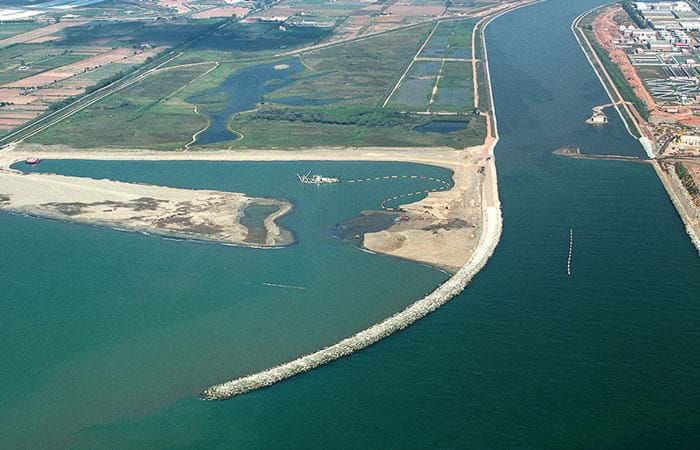Increasing or compensating nature is one of the challenges in modern infrastructural projects. Within the scope of the extension of the Port of Barcelona compensation was required for nature to be preserved. A natural reserve, south of the Port of Barcelona and north of the International Airport of Barcelona, had to be increased and was realized within the city limits of Prat de LLobregat by the use of the cutter suction dredger Para and its auxiliary equipment.
A temporary artificial lagoon was created by moving part of the existing beach more seawards. In a later stage, the temporary lagoon, a surface of approx. 24 ha., was filled up by a local contractor with muddy dredged materials out of the Barcelona port area. By doing so, finally, a wet area was created, breeding place for the famous bird called 'Chorlitejo Patinegro' (the Llobregat Delta is the breeding place for 40% of these birds).
